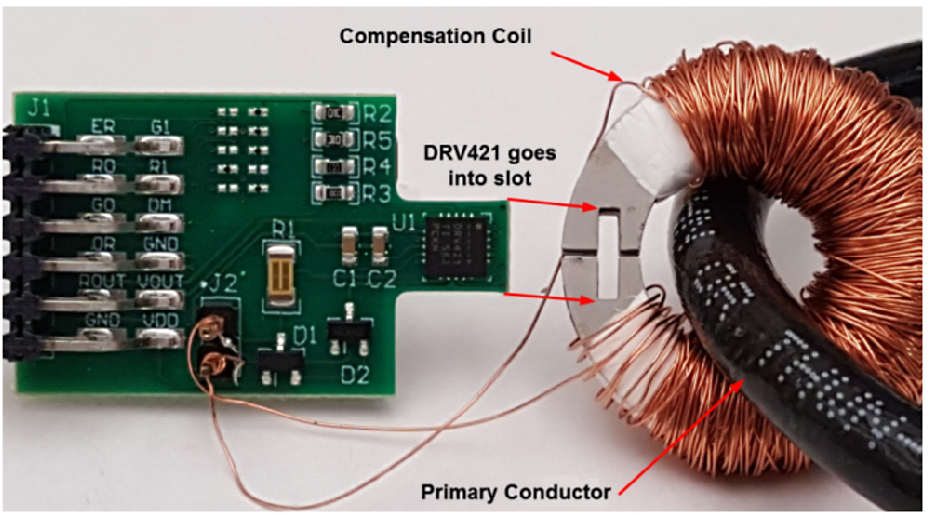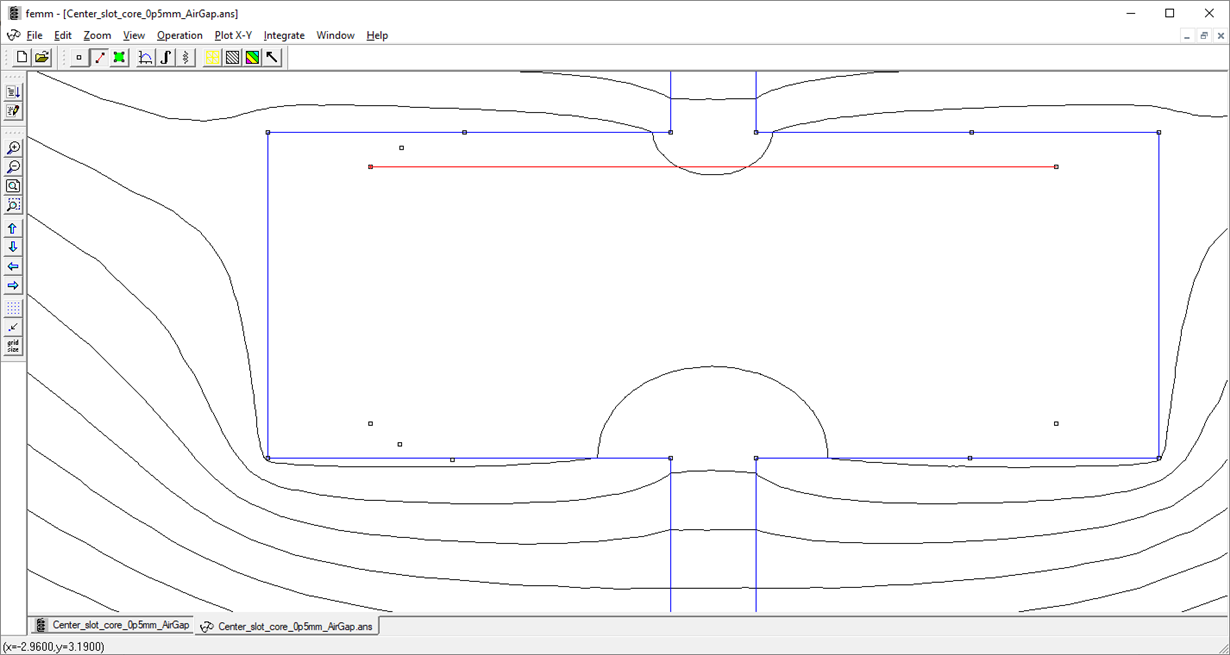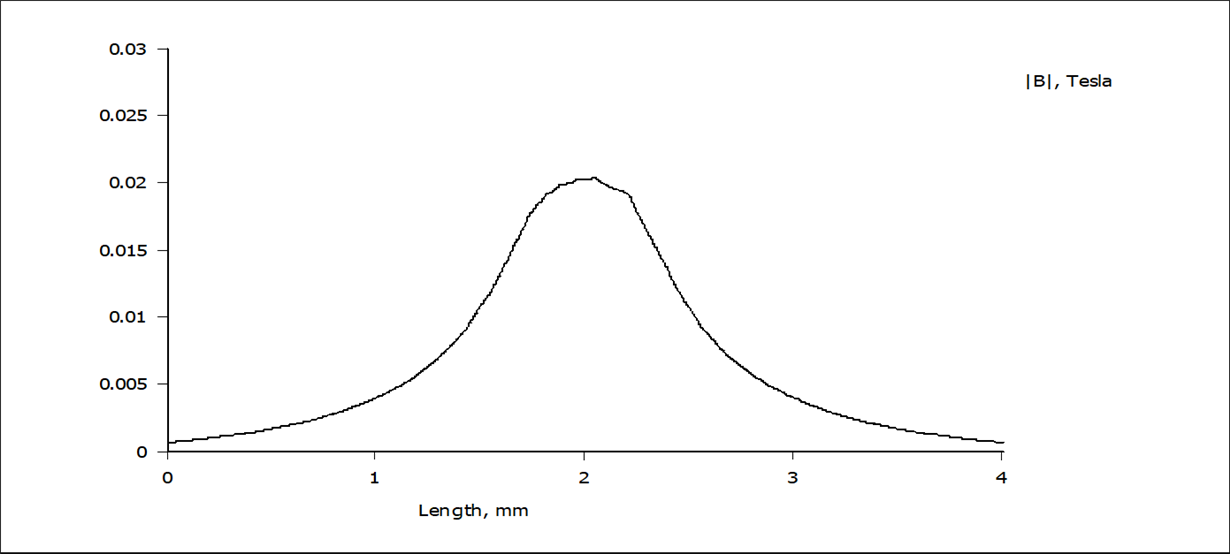Hello,
I'm trying to develop a current transducer using the DRV421, both for current measurement and for Residual current detection.
The specification are about 50A for maximum current and around 10 mA of residual current with an accuracy hoped around 1mA.
Our case is rectangular, and not toroidal, and probably I will be able to wind the compensation winding only on one leg.
Watching the EVM, I see that the ferrite has been milled both to obtain a gap and to insert the chip.
Why do you insert the chip longitudinally instead of orthogonally like other hall chip? Is the B-field inside the gap uniform even with two gaps that cross each other like the figure attached  ?
?
I can't figure how the B-field is like. Do you think that FEMM is enough to understand the behaviour of the B-field, even if it is a 2d magnetic solver, or is it necessary to use a 3d solver like Elmer for example?
Is the core material important, in the sense that influence the performance? A ferromagnetic core like iron is enough? Or more esotic material like nanocrystals are needed?
Also, I see you mentioned a shield to avoid the Earth magnetic field influence the measurement for residual current. How should I put such a shield?
Thank you for your support!
Mattia







